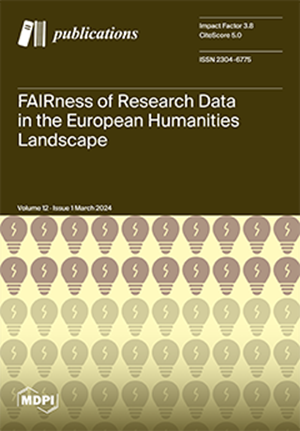Gender-Related Differences in the Citation Impact of Scientific Publications and Improving the Authors’ Productivity
IF 2.5
Q1 INFORMATION SCIENCE & LIBRARY SCIENCE
引用次数: 0
Abstract
The article’s purpose is an analysis of the citation impact of scientific publications by authors of different gender compositions. The page method was chosen to calculate the citation impact of scientific publications, and the obtained results allowed to estimate the impact of the scientific publications based on the number of citations. The normalized citation impact is calculated according to nine subsets of scientific publications that correspond to patterns of different gender compositions of authors. Also, these estimates were calculated for each country with which the authors of the publications are affiliated. The Citation database, Network Dataset (Ver. 13), was chosen for the scientometric analysis. The dataset includes more than 5 million scientific publications and 48 million citations. Most of the publications in the dataset are from the STEM field. The results indicate that articles with a predominantly male composition are cited more than articles with a mixed or female composition of authors in this direction. Analysis of advantages in dynamics indicates that in the last decade, in developed countries, there has been a decrease in the connection between the citation impact of scientific publications and the gender composition of their authors. However, the obtained results still confirm the presence of gender inequality in science, which may be related to socioeconomic and cultural characteristics, natural homophily, and other factors that contribute to the appearance of gender gaps. An essential consequence of overcoming these gaps, including in science, is ensuring the rights of people in all their diversity.科学出版物引文影响与提高作者生产力的性别差异
本文的目的是分析不同性别构成的作者对科学出版物的引文影响。采用页面法计算科学出版物的被引影响,得到的结果可以根据被引次数来估计科学出版物的影响力。规范化引用影响是根据科学出版物的九个子集来计算的,这些子集对应于作者不同性别构成的模式。此外,这些估计数是根据出版物作者所属的每个国家计算的。选择引文数据库Network Dataset (Ver. 13)进行科学计量分析。该数据集包括500多万份科学出版物和4800万次引用。数据集中的大部分出版物都来自STEM领域。结果表明,在这一方向上,男性作者占主导地位的文章比女性作者占主导地位的文章被引用率更高。对动态优势的分析表明,在过去十年中,在发达国家,科学出版物的引用影响与其作者的性别构成之间的联系有所减少。然而,获得的结果仍然证实了科学中存在性别不平等,这可能与社会经济和文化特征、自然同质性以及其他导致性别差距出现的因素有关。克服这些差距(包括科学方面的差距)的一个重要后果是确保各种各样的人的权利。
本文章由计算机程序翻译,如有差异,请以英文原文为准。
求助全文
约1分钟内获得全文
求助全文
来源期刊

Publications
Social Sciences-Library and Information Sciences
CiteScore
6.50
自引率
1.90%
发文量
40
审稿时长
11 weeks
期刊介绍:
The scope of Publications includes: Theory and practice of scholarly communication Digitisation and innovations in scholarly publishing technologies Metadata, infrastructure, and linking the scholarly record Publishing policies and editorial/peer-review workflows Financial models for scholarly publishing Copyright, licensing and legal issues in publishing Research integrity and publication ethics Issues and best practices in the publication of non-traditional research outputs (e.g., data, software/code, protocols, data management plans, grant proposals, etc.) Issues in the transition to open access and open science Inclusion and participation of traditionally excluded actors Language issues in publication processes and products Traditional and alternative models of peer review Traditional and alternative means of assessment and evaluation of research and its impact, including bibliometrics and scientometrics The place of research libraries, scholarly societies, funders and others in scholarly communication.
 求助内容:
求助内容: 应助结果提醒方式:
应助结果提醒方式:


